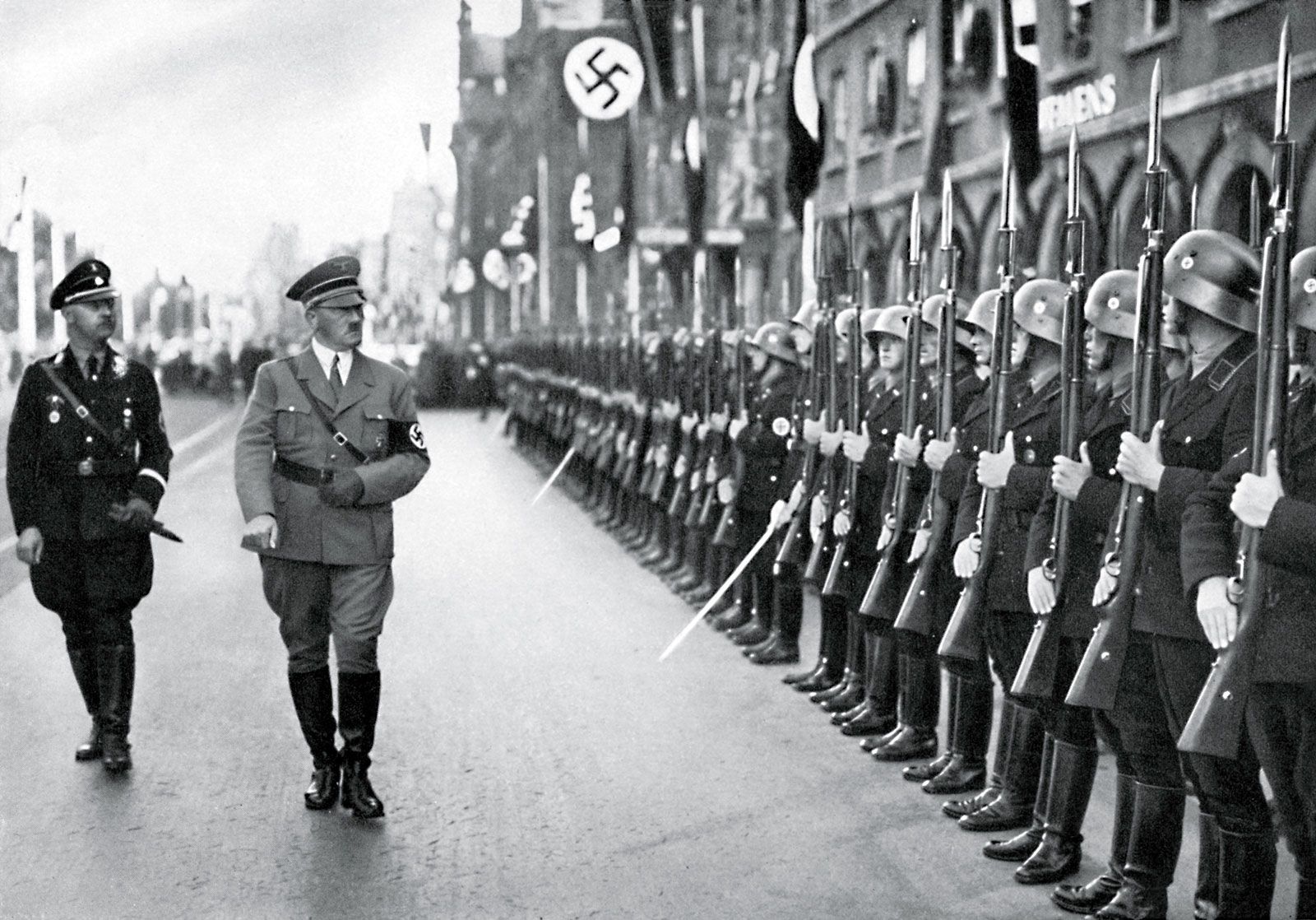Now Hitler could act as he chose, unimpeded by the laws. He instituted a ministry of propaganda under Josef Goebbels (1897-1945). He stripped the state governments of their powers and appointed governors from Berlin who could override the state legislatures. When Hindenburg died in August 1934, Hitler became president as well as chancellor, but he preferred to use the title Der Fiihrer. This new move was approved by a plebiscite in which Hitler obtained 88 percent of the votes.
Political parties that opposed Hitler were forced to dissolve. The government banned Communists and Socialists (May 1933); the Nationalists dissolved themselves (June 1933); the government put an end to the Catholic parties (July 1933) and all monarchist groups (February 1934). The Stahlhelm was incorporated into the Nazi party. In July 1933 the Nazis were declared to be the only legal political party in Germany.
The appeal of the Nazis to the German people lay partly in their denunciation of the “disorderly” parliamentary system; a strong man who got things done struck a responsive chord in the public. In the elections of November 1933, there were no opposition candidates, 92 percent of the electorate voting Nazi, and there were only two non-Nazi deputies in a chamber of 661. As in fascist Italy and communist Russia, youth groups fed the party, which soon had a powerful regional organization all over Germany and among Germans abroad.
Within the Nazi party itself, however, a difficult situation was created by those who had believed Hitler’s more radical pronouncements on social and economic questions. Many of these Nazis were concentrated in the SA, whose members, most of them from the lower classes, were also distressed by how Hitler had treated their organization. The SA had made possible his rise to power, but it was now an embarrassment to Hitler, no longer quite respectable, and certainly not in favor, as were the SS and especially the army.
On June 30, 1934, Hitler ordered and personally participated in a “blood purge.” Ernst Riihm (1887— 1934), founder and leader of the SA, was shot, and so were as many as a thousand others, including the head of Catholic Action, and Schleicher and his wife. Hitler justified the murders, and house arrest for Papen, by declaring that the SA was planning a putsch and that the opposition and all who offended public morality (for Riihm was a homosexual) must be crushed. After June 1934 there was no effective opposition to Hitler left.

